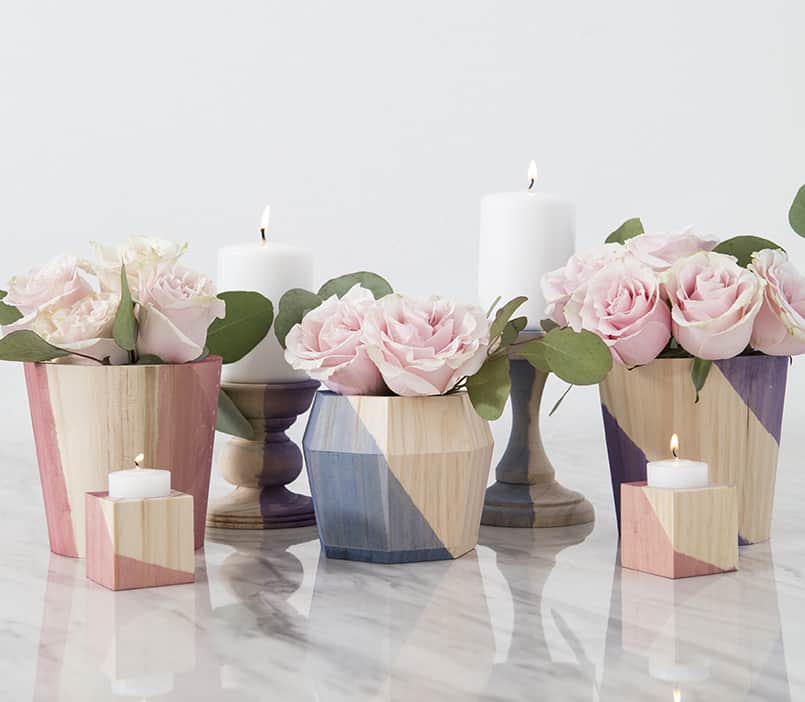Staining unfinished wood and wicker with Rit creates beautiful, lasting results. Because Rit is a water-based dye (and not a heavy oil-based stain), it allows the natural wood grain to show through, adding depth and texture to the finished project. Plus, since wood and wicker absorb dye, the colors won’t chip or peel like paint!


Important Notes
Pine and wicker are soft and absorbent, requiring fewer coats of dye versus oak and cherry, which are hardwoods that may require several coats.
Choose the immersion method if you are dyeing small items or if you are trying to achieve a dip-dyed look.
Choose the brush method if are dyeing large pieces of wood or wicker.
Instructions
- Cover work area with plastic table cover or newspaper and have paper towels handy to protect against any possible spills.
- If necessary, sand unfinished wood lightly and wipe clean. If working with finished wood, strip paint, varnish or wax from the item. Scrape and sand surface until smooth and wipe clean with a tack cloth.
- Wearing gloves, mix 1/2 cup 120 mL of liquid dye or 1 box of powder dye with 2 quarts 1.9 L of very hot water.
- Test color on a scrap piece of similar wood or a hidden area of the item. If the color is too light, add more dye; if the color is too dark, add more water. Please note that the dye will appear lighter when dry.
- If you are trying to achieve a softer look, wet the wood or wicker and then let it dry for 15 minutes before dyeing.
- Dip or immerse item in dye bath for 10 to 20 minutes, turning occasionally. If dye bath is shallow, rotate items evenly.
- Let dye dry completely. If necessary, apply another coat of dye to achieve desired shade.
- Allow wood or wicker to dry completely.
- Sealing:
- Wood: Apply one or two coats of polyurethane using a new foam or bristle brush. Lightly rub with steel wool, or use #220 grit fine sandpaper between coats and remove dust and filings with a tack cloth.
- Wicker: Brush on one or two coats of polyurethane. It is not necessary to rub with steel wool between coats.
